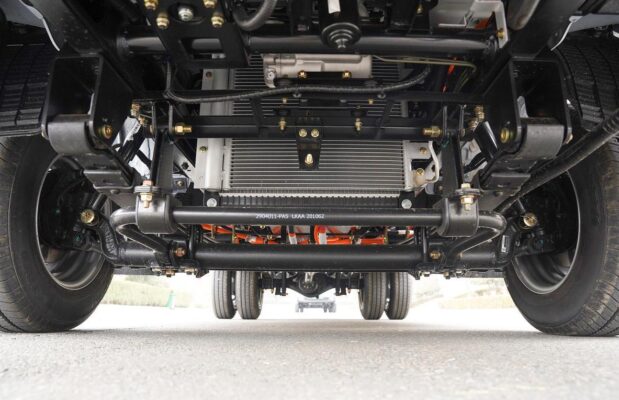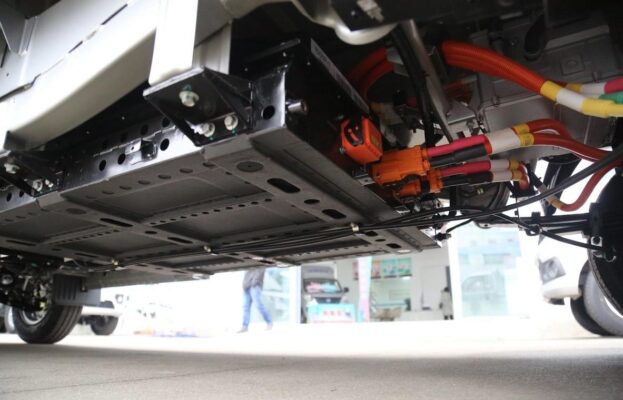Electric Truck Knowledge
What Are the Knowledge of Maintenance and Upkeep for Electric Trucks?
Posted on by Electric Trucks
With the progressive proliferation of new energy vehicles, a growing number of individuals are opting for electric ones. But how much do you know about the maintenance cycle, items, and costs of pure electric vehicles? The most significant distinction between pure electric vehicles and traditional fuel-powered vehicles lies in the alteration of the driving mode. While fuel-powered vehicles demand maintenance of the oil circuit and certain auxiliary components, pure electric vehicles have shifted the focus to circuits that require upkeep. Consequently, the maintenance aspects of electric vehicles have centered around the motor and the battery. Under normal circumstances, the maintenance items of pure electric vehicles encompass those that require regular inspection and servicing, such as the power battery system, cooling system, air conditioning system, braking system, and steering system. The following is an elaborate introduction by the editor: “What Are the Knowledge of Maintenance and Upkeep for Electric Trucks?”

Knowledge of Maintenance and Upkeep for Electric Trucks:
Pure electric vehicles are energy-efficient, environmentally friendly, boast strong performance, and entail low vehicle maintenance costs. For electric vehicles, the hassle of vehicle maintenance has been significantly mitigated. At this point, you might inquire, since pure electric vehicles lack engines and other mechanical transmission mechanisms, how is daily maintenance carried out?
The daily maintenance of pure electric vehicles shares certain similarities with that of fuel vehicles. Just like gasoline vehicles, pure electric vehicles require regular upkeep and daily inspections of components like windshield wipers, tires, brakes, and the like. From the perspective of daily maintenance, the following points warrant attention. Firstly, tire pressure plays a crucial role as it influences tire pressure and vehicle durability. Low pressure escalates the frictional resistance between the tire and the ground. This resistance implies an increase in the power consumption of the vehicle’s motor and, in some cases, can impact the driving range.

Secondly, in daily maintenance, it is essential to have a firm grasp and pay heed to the charger, charging time, and related aspects. The maintenance of the charger primarily focuses on the charging gun. The charger should be wrapped with foam plastic to safeguard against collision and vibration. For pure electric vehicles, both the internal potentiometer of the charger and the battery are influenced to a certain extent following vibration and collision. Taking the potentiometer within the charging gun as an example, once subjected to vibration and collision, the entire parameter will drift, resulting in an abnormal charging status.
During usage, the charging time should be precisely controlled based on the actual circumstances, referring to the usual frequency of use and mileage to determine the charging frequency. During normal driving, if the power meter indicates red and yellow lights, it is advisable to commence charging. If only the red light is illuminated, operation should cease, and charging should be initiated promptly. Failure to do so could lead to excessive discharge, severely curtailing its service life. To summarize, pure electric vehicles have emerged as a new trend in the evolution of future vehicles. Compared to traditional counterparts, the maintenance of pure electric vehicles is indeed far more straightforward. Nevertheless, the maintenance of pure electric vehicles remains of paramount importance. Regular maintenance of the vehicle not only prolongs its lifespan but also reduces the occurrence of vehicle malfunctions.

Let’s delve deeper into the specifics of each maintenance aspect. The power battery system is the heart of an electric vehicle. Regular inspections should include checking for any signs of damage, leakage, or abnormal temperature variations. Battery performance should be monitored to ensure it retains its capacity and charging efficiency over time. The cooling system is crucial for maintaining the optimal operating temperature of the battery and other components. Ensuring the proper functioning of the coolant pump, radiator, and hoses is essential to prevent overheating, which can adversely affect the vehicle’s performance and battery life.
The air conditioning system in an electric vehicle also requires attention. Regular checks of the refrigerant levels, compressor operation, and filter cleanliness help ensure a comfortable cabin environment while minimizing energy consumption. The braking system, though different in some respects from that of a fuel vehicle, still needs to be inspected for brake pad wear, brake fluid levels, and the functionality of regenerative braking components.

The steering system should be checked for smooth operation, absence of abnormal noises, and proper alignment. Additionally, the electrical connections and wiring throughout the vehicle should be inspected for any signs of fraying, corrosion, or loose connections to prevent electrical faults.
It’s also important to keep the vehicle clean, not only for aesthetic purposes but also to prevent dirt and debris from accumulating in critical areas that could potentially affect component performance. Regularly cleaning the battery compartment and charging ports helps maintain good electrical conductivity and reduces the risk of corrosion.

In conclusion, while the maintenance of pure electric trucks may be less complex than traditional vehicles, it still demands diligence and attention to detail. By adhering to a regular maintenance schedule and addressing any potential issues promptly, owners can maximize the performance, reliability, and longevity of their electric vehicles. As technology continues to advance, the maintenance requirements and procedures for electric vehicles may evolve, and staying informed about the latest developments will be crucial for ensuring a seamless and trouble-free driving experience.
The future of transportation is undoubtedly moving towards greater electrification, and with it comes the responsibility of understanding and implementing effective maintenance strategies. This not only benefits individual vehicle owners but also contributes to the overall sustainability and success of the electric vehicle revolution on our roads.